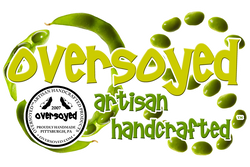Ingredient Aloe Barbadensis Leaf Extract

Aloe Barbadensis Flower Extract, Aloe Barbadensis Leaf, Aloe Barbadensis Leaf Extract, Aloe Barbadensis Leaf Juice, Aloe Barbadensis Leaf Polysaccharides and Aloe Barbadensis Leaf water are ingredients made from the plant Aloe barbadensis, which is also commonly called Aloe vera. Other species of aloe, such as Aloe andongensis, Aloe arborescens and Aloe ferox may also be used to derive cosmetic ingredients. These ingredients include Aloe Andongensis Extract, Aloe Andongensis Leaf Juice, Aloe Arborescens Leaf Extract, Aloe Arborescens Leaf Protoplasts, Aloe Ferox Leaf Extract, Aloe Ferox Leaf Juice and Aloe Ferox Leaf Juice Extract.
In cosmetics and personal care products, ingredients derived from the various species of aloe are used primarily in skin care preparations, makeup formulations and makeup removers, and bath soaps.
The Food and Drug Administration (FDA) reviewed the safety of various aloe species including Aloe barbadensis and Aloe ferox and determined that they may be used as natural flavoring substances for direct addition to food.
The Cosmetic Ingredient Review (CIR) Expert Panel has evaluated the safety of the ingredients derived from the Aloe barbadensis species of plant (which is commonly called Aloe vera). These are the ingredients made from aloe plants that are most often used in cosmetics.
The CIR Expert Panel concluded that they were safe for use in cosmetics. The CIR Expert Panel noted that aloe-derived ingredients may contain anthraquinones, which can be of concern if present at high levels. However, the data available for review by the CIR Expert Panel supported the conclusion that the manufacturing process is well-established and that current controls followed during production are adequate to ensure that anthraquinones remain below levels that would be of concern.
The CIR Expert Panel included other species of aloe in their review - Aloe andongensis, Aloe arborescens and Aloe ferox, and noted that the characterization of ingredients derived from these plants was not clear, especially with highly productive whole-leaf processing and concluded that there were insufficient data to allow the CIR Expert Panel to reach a conclusion. These ingredients find very limited use in cosmetics.
CIR Safety Review: The cells just below the surface of the aloe plant produce a bitter yellow latex containing a number of anthraquinones. Reported to be phototoxic, anthraquinones are also gastrointestinal irritants responsible for the laxative effects claimed with aloe. An industry established limit for anthraquinones in aloe-derived material for non-medicinal use is 50 ppm or lower.
The CIR Expert Panel concluded that anthraquinone levels in the several Aloe barbadensis extracts are well understood and can conform to the industry-established level of 50 ppm. Although the phototoxicity of anthraquinone components of aloe plants has been demonstrated, several clinical studies of preparations derived from Aloe barbadensis plants demonstrated no phototoxicity, confirming that the concentrations of anthraquinones in such preparations are too low to induce phototoxicity. The characterization of Aloe barbadensis-derived ingredients from other species of aloe is not clear. In aloe-derived ingredients used in cosmetics, regardless of species, anthraquinone levels should not exceed 50 ppm.
The CIR Expert Panel noted a lack of inhalation data but concluded that the aerosolized cosmetic formulations in which aloe-derived materials are found would not contain aerosolized particles of a size that are respirable.
